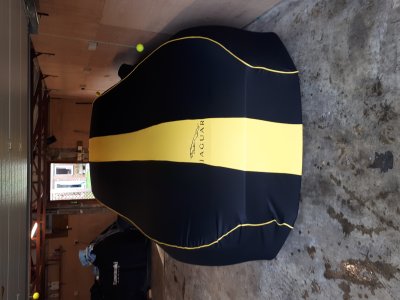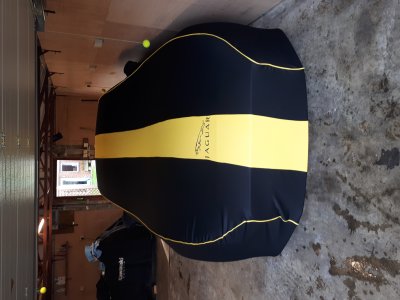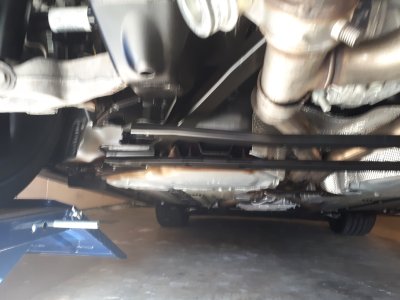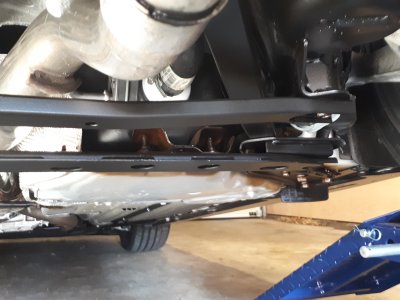You are using an out of date browser. It may not display this or other websites correctly.
You should upgrade or use an alternative browser.
You should upgrade or use an alternative browser.
Great 7 months, bed time!
- Thread starter Fez
- Start date
A
Anonymous
Guest
very nice

A
Anonymous
Guest
basher said:Great cover.
Personally, I'm gonna keep on driving my 400 for the next 5 months. Gritters, or no gritters.
+1
I took my 400 for a spin through some very muddy forests today. It is ditched in mud! Have to wait for some rain now as I cannot wash it.
Each to his or her own, somehow I think the car was made to be driven throughout the year.
OK I get that you might think twice before taking her for a drive in icy or slushy conditions, or maybe you take pleasure in looking at a depreciating asset shrouded in a yellow and black drape for 5 months!
OK I get that you might think twice before taking her for a drive in icy or slushy conditions, or maybe you take pleasure in looking at a depreciating asset shrouded in a yellow and black drape for 5 months!
Hope you have a CTEK charger feeding it for the next few months. Don't bother starting it unless you plan to drive it as that's the worst thing to do as it causes condensation in the exhaust system & under the bonnet. I fill the tank with fuel & pour in a bottle of fuel stabilizer which prevents fuel degradation during storage. I also add an extra 10psi to the tyres to prevent flat spots. Trust you made sure the brakes were dry before putting it away as you don't want any corrosion on the discs. I bought Atom-Mac from Bilt hammer which can be sprayed on any surface including brake discs to prevent rust. Have not used it yet but it gets good reviews.
probbins2000
New member
What a lovely cover, where did you get that?
Thank you for the kind words. I don't worry about depreciation if I did I would not own a car! However , consider Jaguar is for life not for just for xmas. Last one lasted 17 years....
Yes I do use Atom Mac, yes it will not be started unless taken for dry winter run. Yes it has battery conditioner plug in.
Cover custom made from classic additions.
Yes I do use Atom Mac, yes it will not be started unless taken for dry winter run. Yes it has battery conditioner plug in.
Cover custom made from classic additions.
Crickettxx
New member
I guess that is the benefit of living in the Bay of Plenty (NZ North Island)... year round driving. My poor dad on the other hand... he's back in Calgary, Alberta and he's just had to put his Mercedes 560 SL away for the next 7 months (it started snowing back home already, and you won't be driving a car like that in the winter I tell you...).
Mine also gets put to bed for the winter as we seek warmer climates for a few months.
Soft cover and then in a Carcoon which keeps her damp and dust free.
I also place silica gel containers in the car and boot to eliminate any moisture.
My only conundrum is the issue of full tank or empty tank and fill up with brand new fuel when waking her.
My classics always had a full tank and stabiliser but they were not sealed systems and moisture in the fuel system could be a problem.
But modern sealed systems are not supposed to suffer in the same way, hence I choose empty with fresh fuel in the spring.
Soft cover and then in a Carcoon which keeps her damp and dust free.
I also place silica gel containers in the car and boot to eliminate any moisture.
My only conundrum is the issue of full tank or empty tank and fill up with brand new fuel when waking her.
My classics always had a full tank and stabiliser but they were not sealed systems and moisture in the fuel system could be a problem.
But modern sealed systems are not supposed to suffer in the same way, hence I choose empty with fresh fuel in the spring.
Tel
New member
Nice car cover Fez...
Our doesn't rest up, until the temperature falls and well before the salters get out on the road.
We have had our F-Type now for 3 years, and I frequently am out of the UK for all of the year.
I have followed various protocols for storing the car, pumping this tyres to 50 psi, filling this, ensuring this is sorted etc etc; pretty much a waste of time.
I have fallen back on the following protocol with good results. I do have a carpeted, dry bed for our cat to stay on!
If it's dry and sunny and no salt down, start it up and go for a blast of no less than 10 minutes, run the AC to keep the seals 'wetted' and dry the interior of any moisture.
Mechanically - It's better to exercise the car when you can, than to leave it completely.
and thats it...simple.
Our doesn't rest up, until the temperature falls and well before the salters get out on the road.
We have had our F-Type now for 3 years, and I frequently am out of the UK for all of the year.
I have followed various protocols for storing the car, pumping this tyres to 50 psi, filling this, ensuring this is sorted etc etc; pretty much a waste of time.
I have fallen back on the following protocol with good results. I do have a carpeted, dry bed for our cat to stay on!
Leave no more than a quarter of a tank of juice in the car - Modern petrols go off really quickly. No condensation noted in the filler tube or cap doing this
- Clean the car thoroughly inside and out and wax - Common sense when stretching a cover over the paintwork
- Connect CTEK
If it's dry and sunny and no salt down, start it up and go for a blast of no less than 10 minutes, run the AC to keep the seals 'wetted' and dry the interior of any moisture.
Mechanically - It's better to exercise the car when you can, than to leave it completely.
and thats it...simple.
scm
New member
Tel said:Modern petrols go off really quickly.
Really? My "backup" car, an Almera which I kept when I got my first Jag in 2007, sits unused on my drive from one year to the next with hardly any attention apart from firing it up for half an hour every couple of weeks and using a CTEK to maintain the battery. It rarely does more than 50 miles a year, Jaguars are so reliable(!) and I often go nearly two years between fill-ups. Not noticed any problems with the fuel at all.
It would be nice to get a definitive answer on the ‘fuel in storage’ questions as it varies between Tel’s proposal to brimming the car to avoid condensation ...
I’ve been storing my weekender each year during the worst months of the winter and have simply put it away with whatever fuel is left. Like Tel, I try to take it out for a good dry drive when the time / weather permit and will simply add fuel as needed.
I concur with the pre-clean and dry process. I also leave the drivers window slightly dropped to allow air flow whilst under the cover to further prevent any internal trim issues. As for tyres, they are checked along with lights and levels before every drive (ex-biker) and I’ve had no issues ...
HTH
I’ve been storing my weekender each year during the worst months of the winter and have simply put it away with whatever fuel is left. Like Tel, I try to take it out for a good dry drive when the time / weather permit and will simply add fuel as needed.
I concur with the pre-clean and dry process. I also leave the drivers window slightly dropped to allow air flow whilst under the cover to further prevent any internal trim issues. As for tyres, they are checked along with lights and levels before every drive (ex-biker) and I’ve had no issues ...
HTH
A
Anonymous
Guest
According to BP:
Petrol - Petrol is a mixture of many components with different properties that contribute to the performance of the fuel. When petrol is kept in an open container where it is exposed to the air, it will - in time - completely evaporate. As it evaporates, the composition and properties will change because different components evaporate at different rates. This is a normal feature of petrol and helps describe the process which takes place when it is stored in equipment fuel tanks.
Petrol in sealed containers - The storage life of petrol is one year when stored under shelter in a sealed container. Once a seal is broken the fuel has a storage life of six months at 20°C or three months at 30°C.
Petrol in equipment tanks - The storage life of petrol in equipment fuel tanks is one month. This can be extended by topping up with one third of fresh fuel, which restores the volatile components that have evaporated. Topping up with fresh fuel will help, however it is not a foolproof strategy for engines that are used only intermittently.
The following principles may also help:
- Keep the tank half full to stop water vapour from being sucked in and condensing.
- Consider using a fuel that contains anti-oxidants, metal deactivators and corrosion inhibitors to protect metal surfaces such as BP Ultimate.
Petrol - Petrol is a mixture of many components with different properties that contribute to the performance of the fuel. When petrol is kept in an open container where it is exposed to the air, it will - in time - completely evaporate. As it evaporates, the composition and properties will change because different components evaporate at different rates. This is a normal feature of petrol and helps describe the process which takes place when it is stored in equipment fuel tanks.
Petrol in sealed containers - The storage life of petrol is one year when stored under shelter in a sealed container. Once a seal is broken the fuel has a storage life of six months at 20°C or three months at 30°C.
Petrol in equipment tanks - The storage life of petrol in equipment fuel tanks is one month. This can be extended by topping up with one third of fresh fuel, which restores the volatile components that have evaporated. Topping up with fresh fuel will help, however it is not a foolproof strategy for engines that are used only intermittently.
The following principles may also help:
- Keep the tank half full to stop water vapour from being sucked in and condensing.
- Consider using a fuel that contains anti-oxidants, metal deactivators and corrosion inhibitors to protect metal surfaces such as BP Ultimate.
Good evening to all, thank you for the tips on storage. The cat will only be asleep for a maximum of five months so content I have taken the necessary precautions. Check out the dynax s50 on the rear cross member should keep rust away.
Attachments
I did once leave another car with windows slightly down to get some air circulation and when I came back after 6 months the interior was mouldy. That was though, in central Devon where the winter weather is extremely damp! So for me it's fully closed and silica gel containers.
Tel
New member
simpleR said:According to BP:
Petrol in equipment tanks - The storage life of petrol in equipment fuel tanks is one month. This can be extended by topping up with one third of fresh fuel, which restores the volatile components that have evaporated. Topping up with fresh fuel will help, however it is not a foolproof strategy for engines that are used only intermittently.
The following principles may also help:
- Keep the tank half full to stop water vapour from being sucked in and condensing.
- Consider using a fuel that contains anti-oxidants, metal deactivators and corrosion inhibitors to protect metal surfaces such as BP Ultimate.
That's what I do, hence only leaving no more than 1/4 tank if I can. Interestingly though...I have a feeling that the F-Type tank is near as damn it sealed...i.e I believe it has to reach quite a positive pressure before venting to atmosphere is allowed.
You can hear this effect when you stop at the fuel pump and remove the cap as all the positive pressure is released, or maybe that's a huge vacuum where I have just used it up at a rapid pace
@Fez - What ramps do you have there?



